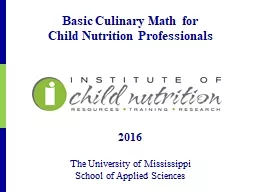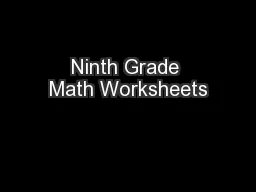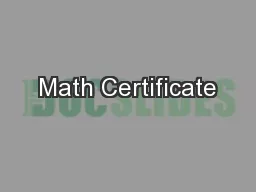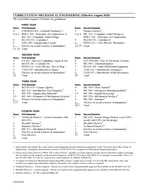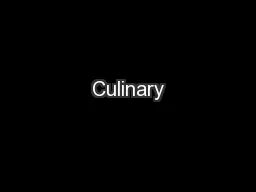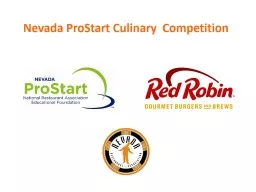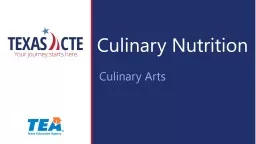PPT-Basic Culinary Math for
Author : briana-ranney | Published Date : 2018-11-06
Child Nutrition Professionals 2016 The University of Mississippi School of Applied Sciences PreAssessment Write a unique identifier in the upper righthand corner
Presentation Embed Code
Download Presentation
Download Presentation The PPT/PDF document "Basic Culinary Math for" is the property of its rightful owner. Permission is granted to download and print the materials on this website for personal, non-commercial use only, and to display it on your personal computer provided you do not modify the materials and that you retain all copyright notices contained in the materials. By downloading content from our website, you accept the terms of this agreement.
Basic Culinary Math for: Transcript
Download Rules Of Document
"Basic Culinary Math for"The content belongs to its owner. You may download and print it for personal use, without modification, and keep all copyright notices. By downloading, you agree to these terms.
Related Documents

